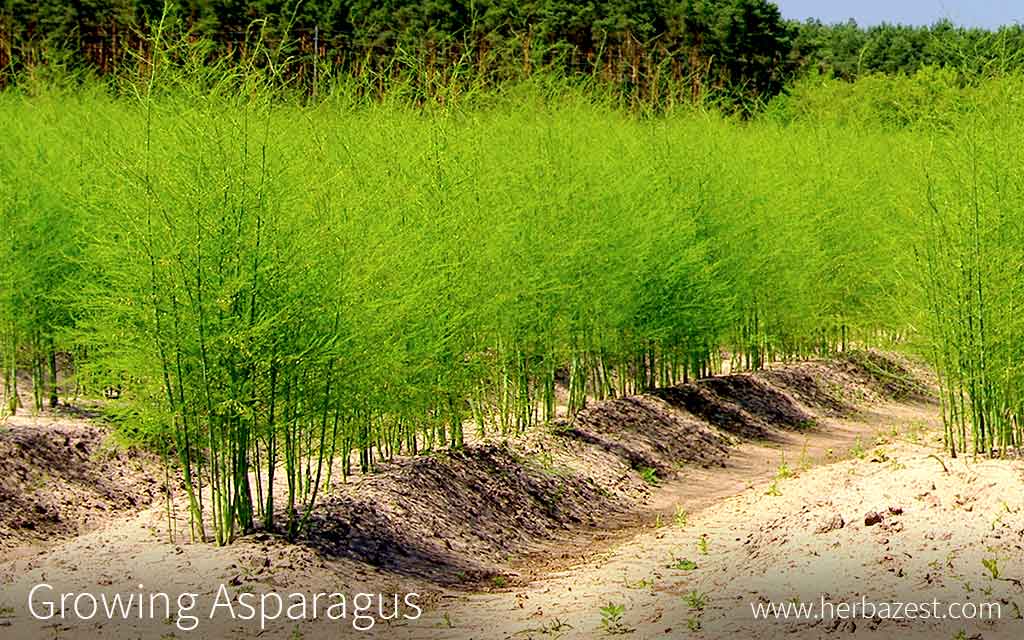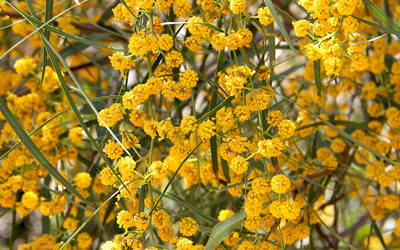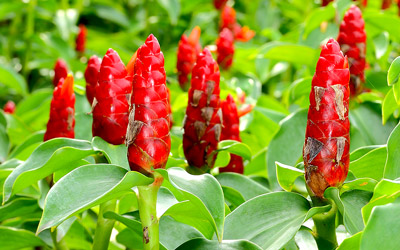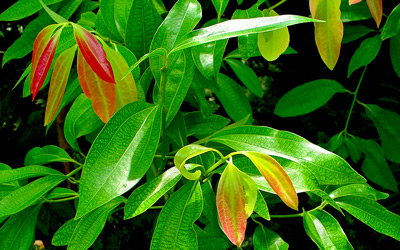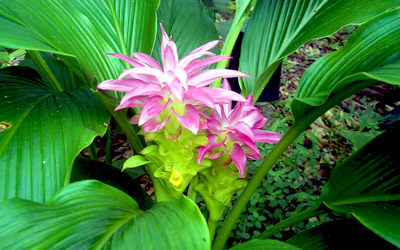Asparagus is a perennial that develops successfully in temperate climates. Its young shoots are highly praised in gourmet cuisine. However, its rhizomes (roots) also contain supporting compounds responsible for its medicinal benefits. The following growing guidelines will make easier the cultivation and care of asparagus at home.
1. Preparing the Soil
Asparagus prefers well-draining soil with a neutral to slightly acidic pH, but tolerates mildly salty soils. Poor drainage can lead to root rot and other diseases.
To prepare the soil, till the growing area to a depth of six inches (15 cm) before planting. Dig a small trench no deeper than five to six inches (13 - 15 cm). If asparagus is planted too deep, it will significantly reduce the crop yield. You may add a little bit of phosphate fertilizer to the soil before planting asparagus.
2. Planting
Planting Asparagus Outdoors
It is recommended that you plant asparagus from transplant, not seed. Asparagus needs to be planted deeply in order for it to produce sturdy spears. Because seeds need to be planted near the surface to germinate, the crown will not be deep enough to produce strong spears. For best results, plant year-old nursery crowns.
Asparagus crowns should be planted 8 - 12 inches (20 - 30 cm) apart. After planting, do not fill in the trenches completely, but cover the crowns with approximately three inches (8 cm) of soil. After about six weeks, when the crown has taken root, add another three inches (8 cm) of soil.
3. Plant Care
Watering
Asparagus should be watered frequently during the first two years after planting. If possible, use a drip irrigation system that provides the plant with approximately two inches (5 cm) of water per week. Once the plant is four years old, reduce irrigation to every two to three weeks.
Fertilizing
Mix a little bit of phosphate fertilizer in the trenches before planting the asparagus crowns. Do not fertilize asparagus with potassium or nitrogen fertilizers, as they may burn the crowns.
Weed Control
It is very important to control weed growth around asparagus, especially in the first few years after transplanting a young crown. Tillage is an option to control weeds, though it may damage the delicate asparagus crowns growing under the soil surface. It is safest to till in the early spring, as shallowly as possible. Other alternatives for weed control are weeding by hand or applying a leaf or straw mulch.
Commercial growers use a number of herbicides for weed control, though many of those herbicides are unavailable to home gardeners and too expensive to use on a very small plot of asparagus.
4. Pest & Disease Control
Pests
Asparagus beetles are one of the main pests that affect asparagus crops. The beetles chew on the outer leaves and stem, damaging the plant and causing it to turn brown. At the end of each growing season, gather and destroy all debris from the previous season to prevent infestation. You can also remove and kill beetles by hand. Alternative pesticides containing pyrethrum have been found to be effective against asparagus beetles.
Other pests that may affect asparagus plants are slugs and snails. Slugs and snails can be controlled by setting out beer traps or creating barriers with sawdust, eggshells, or copper tape.
Diseases
Diseases can be very damaging to asparagus plants. Some of the most common asparagus diseases are asparagus rust and purple spot. One way to control disease is to remove and destroy any debris from the previous year in order to kill any over-wintering structures.
Most diseases that affect asparagus plants require moist conditions to grow, so another preventative practice would be to allow more space between plants to improve air movement and drying. If disease occurs despite preventative measures, a fungicide can be applied to the plant on a regular basis.
5. Harvest
Do not harvest asparagus the first year you plant it. When the plant is mature, usually the third year after planting, it should be harvested whenever the spears are tall enough, typically between 8 - 10 inches (20 - 25 cm). At the end of the harvesting season, allow the spears to grow, as that will help to replenish the crown for the next season.
When harvesting, you can either cut or snap off the spear. Most growers will cut the asparagus below the soil surface. However, in some regions, asparagus is snapped off above the soil surface. Snapping the asparagus helps to eliminate the extremely fibrous, woody bottom section that is usually trimmed off before consumption anyway.
6. Storage
Asparagus should be cooled immediately after picking. That way, asparagus can be stored for up to three weeks at a temperature of approximately 36°F (2°C) with relatively high humidity. Storing asparagus at temperatures below 32°F (0°C) may cause damage.

